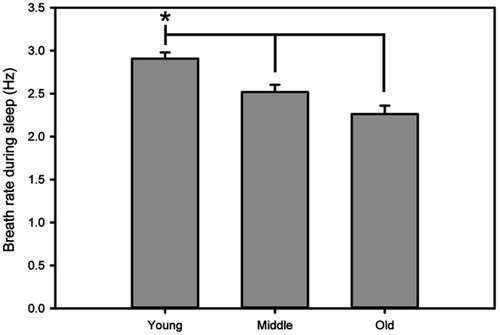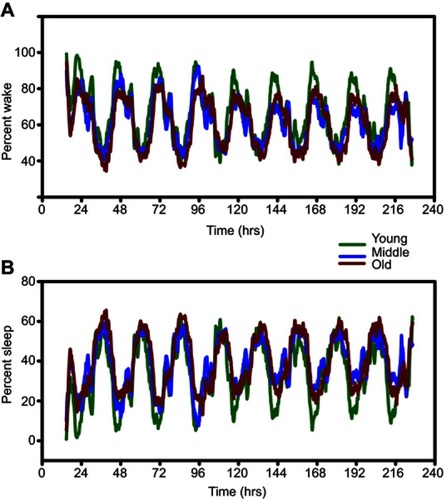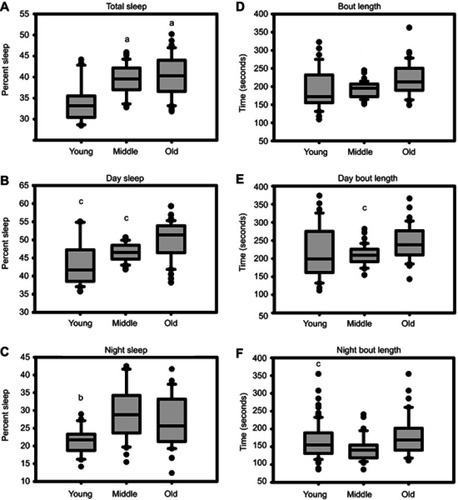Figures & data
Figure 1 Breath rate as an indicator of sleep during piezoelectric recording. The piezoelectric recording system uses breath rate to determine active vs sleep states. Here, breath rates during sleep in young mice were significantly different than middle-aged and old mice. Asterisk indicates p<0.05.

Figure 2 Representative piezoelectric recordings of wake and sleep in young (green lines), middle-aged (blue lines), and old (red lines) mice. Overlaying each trace shows greater differences in wake activity (A) vs sleep (B).

Figure 3 Representative activity (left panels) and sleep (right panels) profiles of young (top pair), middle-aged (middle pair), and old-aged (bottom pair) mice. Within each panel, onset (green lines), peak (blue lines), and offset (red lines) as calculated by ActogramJ are indicated.

Figure 4 Effects of age on measures of sleep. (A) The percentage of time asleep is lower in young mice than in either middle-aged or old mice. (B) The percentage of time asleep during the day is greater in old mice than in either young or middle-aged mice. (C) The percentage of time asleep during the night is lower in young mice than in either middle-aged or old mice. (D) Average sleep bout length is highly variable. (E, F) Similarly, day-time and night-time sleep bout length is highly variable. (a) indicates significance vs young, (b) indicates significance vs middle-aged, and (c) indicates significance vs old mice.

Figure 5 Effects of age on circadian parameters of sleep. (A) Aged mice exhibit a delayed activity onset. (B) No effect of age can be discerned in activity offset. (C) Aged mice exhibit a phase-delayed peak wake activity. (D) Young mice were more wakeful compared to middle-aged and old mice at one, two, and three hours after dark onset. Asterisks indicate p<0.05.

